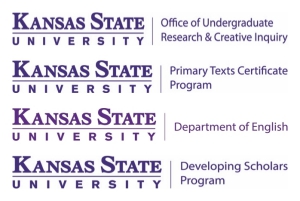Characterizing Protein Aggregates in Drosophila Muscle Tissue
Abstract
NUAK is a conserved protein kinase that can phosphorylate multiple target substrates within a cell. NUAK is expressed in numerous tissues, including skeletal muscle, and has known function in regulating cytoskeletal motors. Humans possess two copies of NUAK—NUAK1/ARK5 and NUAK2/SNARK. NUAK1-/-; NUAK2-/- double mutants are embryonic lethal in mice. However, mutation of a single Drosophila NUAK gene is viable throughout larval stages, allowing for the in vivo examination of genes that function with NUAK. NUAK mutants show muscle degeneration, partially caused by the inability to clear protein aggregates. Based upon our preliminary data from bioinformatics analysis and genetic screens, we find that starvin (stv) and jaguar (jar) interact with NUAK to enhance muscle degeneration. Stv (mammalian ortholog BAG-3) is a co-chaperone localized at the Z-disk in muscle and is essential for ubiquitin-dependent autophagy and muscle maintenance. Jar encodes for Myosin VI (Myo VI), a molecular motor that transports cargo towards the minus-end of actin filaments. Thus, we speculate that MyoVI may be important for the transport of proteins destined for degradation. Future experiments will focus on how and where proteins accumulate in stv and jar mutants. Together, our results will provide a better understanding of proteins that act in the autophagy pathway, with the long-term goal of treating protein aggregations implicated in degenerative neuromuscular diseases.
Characterizing Protein Aggregates in Drosophila Muscle Tissue
NUAK is a conserved protein kinase that can phosphorylate multiple target substrates within a cell. NUAK is expressed in numerous tissues, including skeletal muscle, and has known function in regulating cytoskeletal motors. Humans possess two copies of NUAK—NUAK1/ARK5 and NUAK2/SNARK. NUAK1-/-; NUAK2-/- double mutants are embryonic lethal in mice. However, mutation of a single Drosophila NUAK gene is viable throughout larval stages, allowing for the in vivo examination of genes that function with NUAK. NUAK mutants show muscle degeneration, partially caused by the inability to clear protein aggregates. Based upon our preliminary data from bioinformatics analysis and genetic screens, we find that starvin (stv) and jaguar (jar) interact with NUAK to enhance muscle degeneration. Stv (mammalian ortholog BAG-3) is a co-chaperone localized at the Z-disk in muscle and is essential for ubiquitin-dependent autophagy and muscle maintenance. Jar encodes for Myosin VI (Myo VI), a molecular motor that transports cargo towards the minus-end of actin filaments. Thus, we speculate that MyoVI may be important for the transport of proteins destined for degradation. Future experiments will focus on how and where proteins accumulate in stv and jar mutants. Together, our results will provide a better understanding of proteins that act in the autophagy pathway, with the long-term goal of treating protein aggregations implicated in degenerative neuromuscular diseases.


